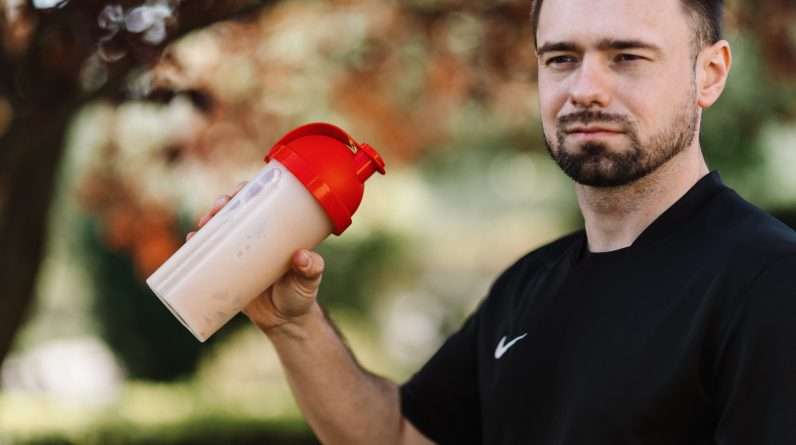
Embracing Health and Flavor: The No-Sugar, Low-Sodium Meal Plan
In a world where sugary and high-sodium foods are readily available and often tempting, adopting a no-sugar, low-sodium meal plan can be a transformative step towards enhancing your health and redefining your palate. By eliminating excessive added sugars and reducing sodium intake, you can improve your overall well-being, manage weight, prevent chronic diseases, and discover a whole new world of delicious, nutritious flavors. In this article, we will explore the benefits of a no-sugar, low-sodium meal plan and provide practical tips for incorporating it into your lifestyle.
Why Reduce Sugar and Sodium?
Reducing sugar and sodium intake has numerous benefits. Too much sugar can lead to inflammation, obesity, and various health issues, while high sodium levels can increase blood pressure and contribute to heart disease. Cutting back on both can lower the risk of these and other health problems.
Sugar:
- Lower risk of diabetes and obesity
- Better skin health
- Improve mental clarity and focus
Sodium:
- Lower risk of heart disease and stroke
- Reduced bloating and water retention
- Better athletic performance
Other Benefits:
- Improved taste sensitivity
- Reduced cravings for unhealthy foods
- Increased energy levels
Foods to Eliminate and Alternatives to Try
Eliminating sugar and sodium from your diet can seem daunting, but there are plenty of alternatives to try that are just as delicious, if not more so. Instead of sugar, try natural sweeteners like honey or maple syrup. Use herbs and spices for flavour instead of salt, and experiment with sour and tangy ingredients like balsamic vinegar or citrus juice.
| Foods to Eliminate | Alternatives |
| Processed and packaged foods | Whole foods such as vegetables, fruits, and lean proteins |
| Sodas and sweetened beverages | Water, unsweetened tea, or sparkling water with a splash of fruit juice |
| Candy and sweets | Fruit as a natural sweetener or nutritious alternative |
| Salt and high-sodium seasonings | Herbs, spices, and other natural seasonings like garlic, onion, and ginger |
Nutritious Meal Ideas
Meals can be both healthy and delicious. Here are some ideas for your next menu:
Breakfast:
Oatmeal with berries and a drizzle of honey, accompanied by a glass of fresh-squeezed orange juice.
Lunch:
Grilled chicken breast with roasted veggies and a side salad dressed with balsamic vinegar.
Dinner:
Herbed salmon with quinoa and asparagus, topped with a squeeze of lemon.
Tips for Implementing the Meal Plan
Transitioning to a no-sugar, low-sodium meal plan can take time and effort, but it is worth it for the benefits it provides. Here are some tips to help you succeed:
Plan Ahead
Make a schedule and grocery list ahead of time to stay on track and avoid last-minute unhealthy choices.
Stay Hydrated
Water is essential to any healthy lifestyle, and staying hydrated can help curb cravings and keep you feeling full.
Experiment with Flavour
There are endless flavour possibilities outside of sugar and salt. Experiment with new herbs, spices, and fresh ingredients to discover delicious, healthy dishes.
Track Progress
Keeping a journal or tracking tool can help you see progress and stay motivated along the way.
Sneaky Sources of Added Sugar
- Flavored Yogurts
- Flavored Nondairy Milks, such as Vanilla or Chocolate Soymilk or Almond Milk
- Peanut Butter
- Granola Bars
- Marinades
- Salad Dressings
- Pasta Sauce
Foods That Have Low-Sodium Options
- Prepared Broth
- Canned Beans
- Tomato Paste
- Canned Soup
Benefits of No-Sugar Low-Sodium Meal Plan:
Reduced risk of chronic diseases: Excessive sugar and sodium intake have been linked to an increased risk of conditions like heart disease, diabetes, and high blood pressure. By cutting out these ingredients, you can significantly lower your risk of developing such health issues.
Weight management: Processed foods high in sugar and sodium tend to be calorie-dense, leading to weight gain and difficulty in managing a healthy weight. Choosing whole, unprocessed foods allows you to feel more satisfied while consuming fewer calories. This can contribute to weight loss or maintenance.
Improved energy levels: Refined sugar can cause energy crashes and mood swings. By eliminating sugar and opting for nutrient-dense foods, you can stabilize your energy levels throughout the day, leading to increased productivity and overall well-being.
Enhanced taste perception: After reducing sugar and sodium consumption, you’ll find that your taste buds become more sensitive to natural flavors. This can lead to a greater appreciation for the subtle tastes of fruits, vegetables, and whole foods. It may also make it easier to enjoy healthier options in the long run.
Reduced cravings and sugar dependency:
A no-sugar meal plan helps break the cycle of sugar cravings and dependence. By avoiding added sugars, your body gradually adjusts to a lower level of sweetness, reducing the desire for sugary foods and drinks.
Improved digestion: High sodium intake can contribute to water retention and bloating. By reducing sodium in your diet, you may experience improved digestion, decreased bloating, and a more comfortable gastrointestinal system.
Better blood pressure control: Lowering sodium intake is beneficial for individuals with high blood pressure or those at risk for developing it. Following a low-sodium meal plan can help regulate blood pressure levels and reduce strain on the cardiovascular system.
Enhanced nutrient intake: By focusing on whole, unprocessed foods, you naturally increase your intake of essential nutrients such as vitamins, minerals, and fiber. This can support overall health, immune function, and promote optimal organ function.
Improved skin health: High sugar intake has been associated with skin issues like acne and premature aging. By eliminating sugar, you may notice improvements in skin clarity and a more radiant complexion.
Increased awareness of food choices:
Following a no-sugar, low-sodium meal plan for ten days can heighten your awareness of the hidden sugars and sodium content in processed foods. This newfound knowledge can empower you to make healthier food choices even after the plan is complete, promoting a long-term healthy eating lifestyle.
Remember, before making any significant dietary changes, it’s always a good idea to consult with a healthcare professional or a registered dietitian to ensure that the plan is suitable for your individual needs and health condition.
Implementing a no-sugar, low-sodium meal plan is an effective way to boost overall health and redefine your eating habits. It can be challenging, but with careful planning and commitment, it is a lifestyle change that can last a lifetime. Enjoy the benefits of this meal plan and the delicious, nutritious foods that come with it.
“A healthy outside starts from the inside.”
– Robert Urich

Colourful and nutritious, this platter is perfect for sharing.

A nutritious and colourful salad is easy to make and always delicious.

Stir-fry allows you to take advantage of umami and healthy ingredients like ginger, garlic, and bell peppers.






